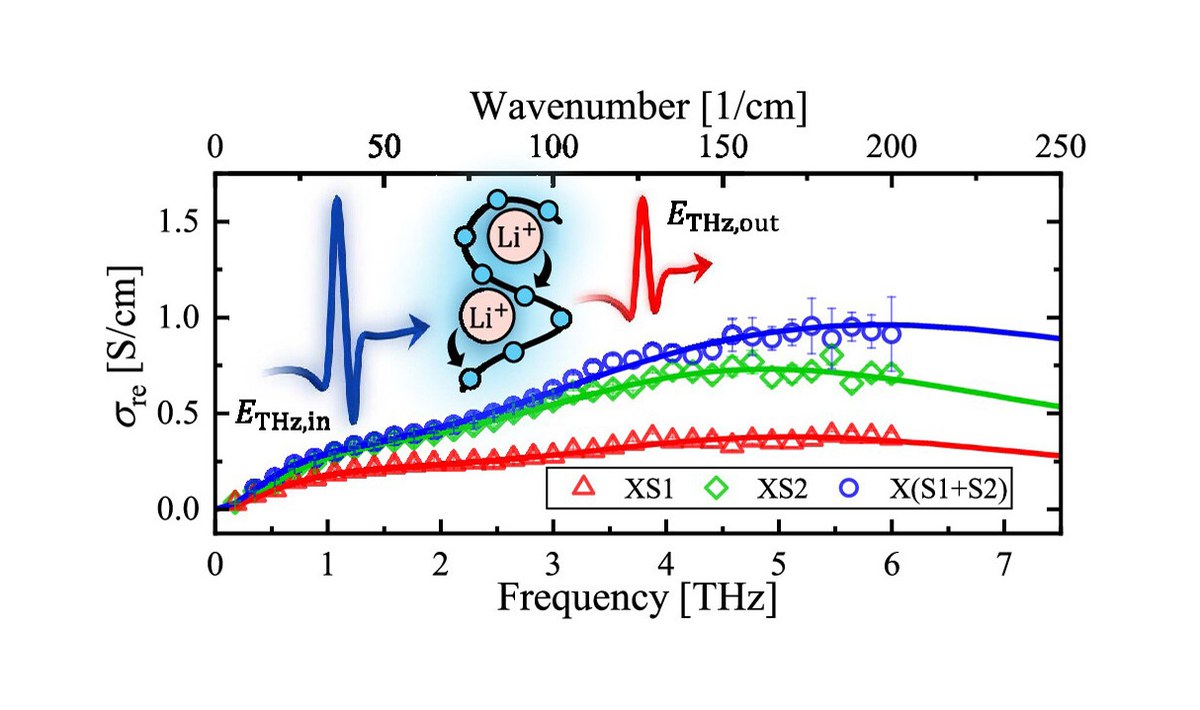Conductivity of Polymer-Based Electrolytes in Lithium Batteries Decoded
New study shows how lithium ions move in polymer-based electrolytes and which parameters influence their ionic conductivity.

18 June 2024 – The natural vibration of long molecular chains in the polymer-based electrolytes influences their ionic conductivity in lithium batteries. This chain vibration is influenced by the added lithium salt and the ambient conditions. This is the result of a new study by researchers from Helmholtz Institute Münster (HI MS; IEK-12) of Forschungszentrum Jülich and Bielefeld University.
Vibrations in Polymer Chains Help With Transport of Lithium Ions
The transport of lithium ions in polymer electrolytes is responsible for their electrical conduction properties. Understanding the mechanism of this transport and the factors that influence it is important in order to make modifications, improvements and new developments.
Using spectroscopy with terahertz radiation (the low-frequency side of far infrared), the team led by Dr Masoud Baghernejad from Helmholtz Institute Münster and Dr Hassan Hafez from Bielefeld University shows that the natural vibration of long molecular chains that make up polymers help the lithium ions jump from one position to the next and thus conduct ionic current. The stronger the vibrational activity of the polymer chains in the electrolyte, the higher is the ion hopping and thus the conductivity of the electrolyte. These polymer chain dynamics are strongly dependent on the content of the added lithium salt and the ambient conditions.
Research Method
"Terahertz spectroscopy has proven itself for our investigations of the molecular chains, as there is no contact with the material and therefore no damage is caused to the object under investigation," explains Dr Baghernejad. "Here we worked closely with the Terahertz Science group at Bielefeld University, as they have a lot of expertise and the proper facilities of terahertz spectroscopy required for the study."
Conventional characterisation methods such as electrochemical impedance spectroscopy at kilohertz and megahertz frequencies and infrared spectroscopy can only provide information about the electrical ionic conductivity and the quality of the surrounding polymer, without giving any insight into the physical mechanism of ionic conductivity. The mid-frequency range, for example terahertz frequencies, and the applied terahertz spectroscopy approach can close this gap and provide the missing information.
Study Available in Journal of Physical Chemistry C
The detailed results of their study were published by the researchers Dr Jijeesh Ravi Nair, Dr Diddo Diddens, Felix Pfeiffer and Dr Masoud Baghernejad from Helmholtz Institute Münster (HI MS; IEK-12) at Forschungszentrum Jülich together with Dr. Hassan Hafez, Johanna Weidelt, Dr Wentao Zhang, Dr Tomoki Hiraoka, Linda Nesterov and Prof. Dr Dmitry Turchinovich from the University of Bielefeld as well as Tiago de Oliveira Schneider and Prof. Dr Markus Meinert from the Technical University of Darmstadt as an open access article in the Journal of Physical Chemistry C.
